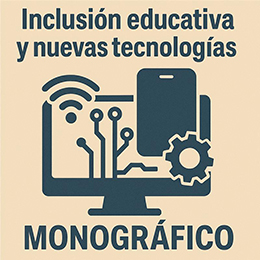Gamificación aplicada a la educación: videojuego Serpientes y Escaleras
DOI:
https://doi.org/10.51302/tce.2019.339Palabras clave:
gamificación, aprendizaje, motivación, ingeniería, videojuegoResumen
La educación, en general, y las universidades, en particular, están constantemente buscando nuevas formas de trasmitir el conocimiento. En los últimos años, la tecnología ha permitido que se consiga este objetivo, haciendo que el aprendizaje sea más cercano y accesible; sin embargo, existen algunos obstáculos que la tecnología por sí sola no es capaz de superar, y ahí es donde entra en juego un concepto que, a pesar de no ser nuevo, está aún poco explotado: la gamificación.
En este trabajo se presenta un ejemplo de gamificación aplicado a la educación, el videojuego Serpientes y Escaleras, incorporando elementos psicológicos como la motivación, los estímulos o las emociones −muy habituales en los videojuegos−, que aumentan el interés y la concentración de los estudiantes en el aprendizaje de ciertas materias.
Finalmente, se realiza una retrospectiva general del proyecto y se exponen ideas para estudios futuros que puedan ampliar los objetivos de este trabajo, cuyo desarrollo se realizó en el contexto del trabajo fin de grado de Ingeniería Informática y donde se utilizó la asignatura de Autómatas y Procesadores de Lenguajes como materia de ejemplo para la enseñanza.
Descargas
Citas
Armstrong, M. B. y Landers, R. N. (10 April 2018). Gamification of employee training and development. International Journal of Training and Development, 22(2), 162-169. doi: https://doi.org/10.1111/ijtd.12124.
Arnold, B. J. (2014). Gamification in education. American Society of Business and Behavioral Sciences Proceedings. Paris. Recuperado de https://www.researchgate.net/profile/Brian_Arnold3/publication/295401531_Gamification_in_Education/links/56c9ea4308ae11063709a99d.pdf (consultado en septiembre de 2018).
Deterding, S., Sicart, M., Nacke, L., O'Hara, K. y Dixon, D. (2011). Gamification: using amedesign elements in non-gaming contexts. Proceedings of the CHI 2011 Extended Abstracts on Human Factors in Computing Systems (pp. 2.425-2.428). Vancouver, BC, Canada: ACM.
Díaz Cruzado, J. y Troyano Rodríguez, Y. (2013). El potencial de la gamificación aplicado al ámbito educativo. III Jornadas de Innovación Docente. Innovación Educativa: Respuesta en Tiempos de Incertidumbre. Universidad de Sevilla. Recuperado de https://idus.us.es/xmlui/handle/11441/59067 (consultado en septiembre de 2018).
Hernández, L., Muñoz, M., Mejía, J., Peña, A., Rangel, N. y Torres, C. (2017). Una revisión sistemática de la literatura enfocada en el uso de gamificación en equipos de trabajo en la ingeniería de software. Revista Ibérica de Sistemas e Tecnologias de Informação, 1(21), 33-50. doi: https://doi.org/10.17013/risti.21.33-50.
Korn, O., Funk, M. y Schmidt, A. (2015). Towards a gamification of industrial production: a comparative study in sheltered work environments. EICS 2015 Proceedings of the 7th ACM SIGCHI Symposium on Engineering Interactive Computing Systems (pp. 84-93). Duisburg, Alemania: ACM.
Melo-Solarte, D. S. y Díaz, P. A. (2018). El aprendizaje afectivo y la gamificación en escenarios de educación virtual. Información Tecnológica, 29(3), 237-248. doi: https://doi.org/10.4067/S0718-07642018000300237.
Pérez-López, I., Rivera García, E. y Trigueros Cervantes, C. (2017). «La profecía de los elegidos»: un ejemplo de gamificación aplicado a la docencia universitaria. Revista Internacional de Medicina y Ciencias de la Actividad Física y el Deporte, 17(66), 243-260. doi: https://doi.org/10.15366/rimcafd2017.66.003.
Tan, E. y Okamoto, Y. (2018). iPlay, iLearn, iConserve: digital game-based learning for ustainable tourism education. ASEAN Tourism Research Association Conference (pp. 32-40). Phuket, Thailand: School of Arts, Murdoch University.
Torres-Toukoumidis, A., Romero-Rodríguez, L. M., Pérez-Rodríguez, M. A. y Björk, S. (2016). Modelo teórico integrado de gamificación en ambientes e-learning. Revista Complutense de Educación, 29(1), 129-145. doi: https://doi.org/10.5209/RCED.52117.
Vallejo Fernández, D. y Martín Angelina, C. (2013). Desarrollo de juegos: arquitectura del motor de juegos. (2.ª ed.). Ciudad Real, España: Universidad de Castilla-La Mancha.
Vera, P. M., Moreno, E. J., Rodríguez, R. A., Valles, F. E, Tamashiro, S. y Vogel, F. (2018). Plataforma gamificada que permite la resolución de desafíos en lenguaje C en el ámbito universitario. Libro de actas del XX Workshop de Investigadores en Ciencias de la Computación-WICC 2018 (pp. 1.093-1.097). Corrientes, Argentina: Universidad Nacional del Nordeste. Facultad de Ciencias Exactas. Recuperado de http://wicc2018.unne.edu.ar/wicc2018librodeactas.pdf (consultado en septiembre de 2018).
Waldegg, G. (2002). El uso de las nuevas tecnologías para la enseñanza y el aprendizaje de las ciencias. Revista Electrónica de Investigación Educativa, 4(1). Recuperado de https://redie.uabc.mx/redie/article/view/53/1248 (consultado en septiembre de 2018).
Wolf, M. J. (2001). The video game as a medium. En M. J. Wolf, The medium of the video game (pp. 14-19). Austin, EE.UU.: University of Texas Press.
Descargas
Publicado
Cómo citar
Número
Sección
Licencia
Derechos de autor 2019 José Manuel Ortiz-Ramírez, Javier Bravo-Agapito

Esta obra está bajo una licencia internacional Creative Commons Atribución-NoComercial-SinDerivadas 4.0.


























